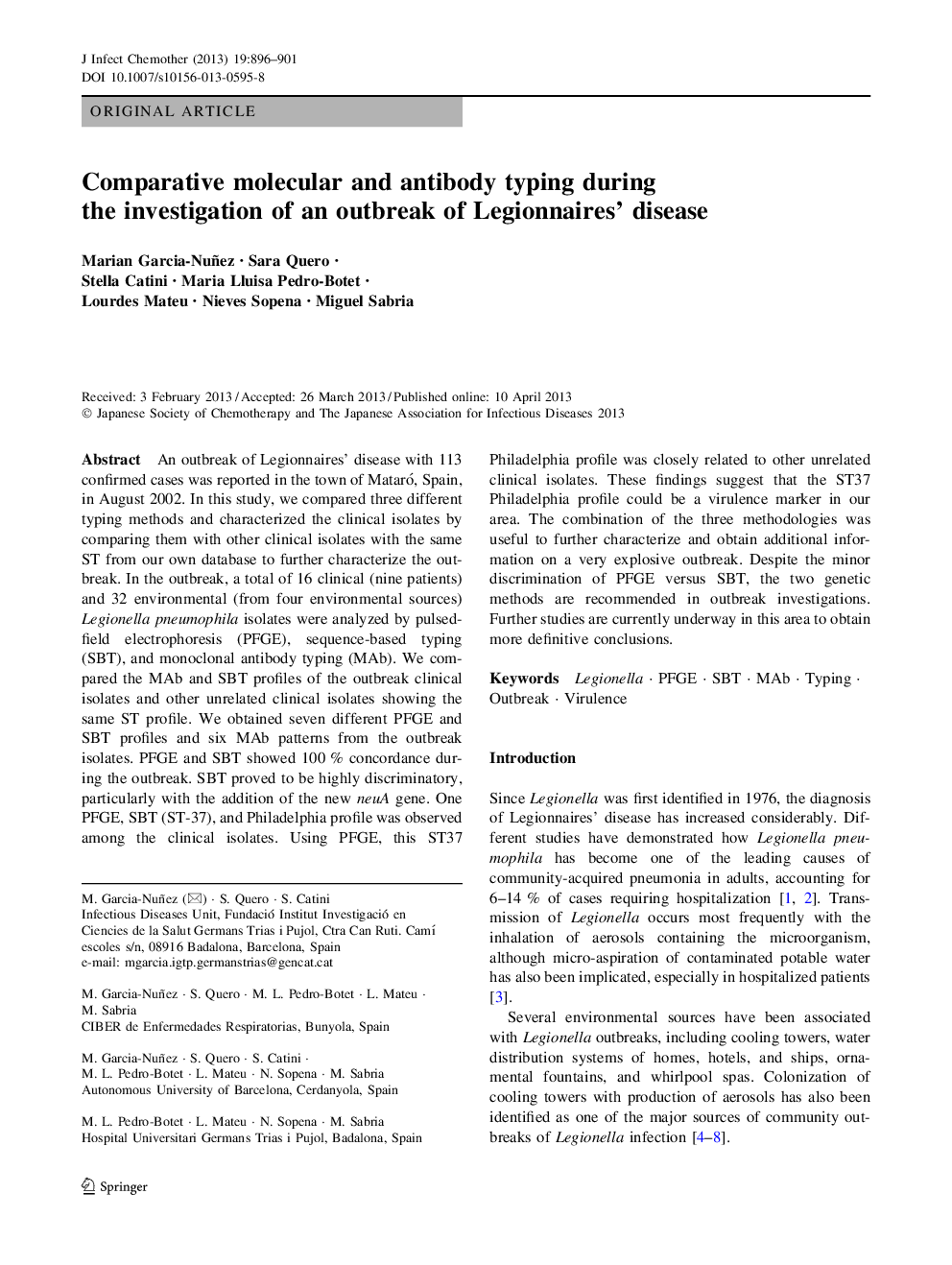| Article ID | Journal | Published Year | Pages | File Type |
|---|---|---|---|---|
| 6123810 | Journal of Infection and Chemotherapy | 2013 | 6 Pages |
Abstract
An outbreak of Legionnaires' disease with 113 confirmed cases was reported in the town of Mataró, Spain, in August 2002. In this study, we compared three different typing methods and characterized the clinical isolates by comparing them with other clinical isolates with the same ST from our own database to further characterize the outbreak. In the outbreak, a total of 16 clinical (nine patients) and 32 environmental (from four environmental sources) Legionella pneumophila isolates were analyzed by pulsed-field electrophoresis (PFGE), sequence-based typing (SBT), and monoclonal antibody typing (MAb). We compared the MAb and SBT profiles of the outbreak clinical isolates and other unrelated clinical isolates showing the same ST profile. We obtained seven different PFGE and SBT profiles and six MAb patterns from the outbreak isolates. PFGE and SBT showed 100Â % concordance during the outbreak. SBT proved to be highly discriminatory, particularly with the addition of the new neuA gene. One PFGE, SBT (ST-37), and Philadelphia profile was observed among the clinical isolates. Using PFGE, this ST37 Philadelphia profile was closely related to other unrelated clinical isolates. These findings suggest that the ST37 Philadelphia profile could be a virulence marker in our area. The combination of the three methodologies was useful to further characterize and obtain additional information on a very explosive outbreak. Despite the minor discrimination of PFGE versus SBT, the two genetic methods are recommended in outbreak investigations. Further studies are currently underway in this area to obtain more definitive conclusions.
Related Topics
Life Sciences
Immunology and Microbiology
Applied Microbiology and Biotechnology
Authors
Marian Garcia-Nuñez, Sara Quero, Stella Catini, Marian Garcia-Nuñez, Sara Quero, Maria Lluisa Pedro-Botet, Lourdes Mateu, Miguel Sabria, Marian Garcia-Nuñez, Sara Quero, Stella Catini, Maria Lluisa Pedro-Botet, Lourdes Mateu, Nieves Sopena,
